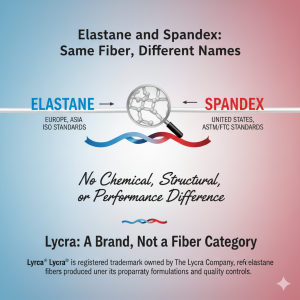Covered spandex yarn is a revolutionary textile material that combines elasticity with durability, offering a perfect solution for various applications in the fashion and textile industry. This article will delve into Tips for Working with everything you need to know about covered spandex yarn, including its composition, uses, and comparisons with other fibers like polyester.
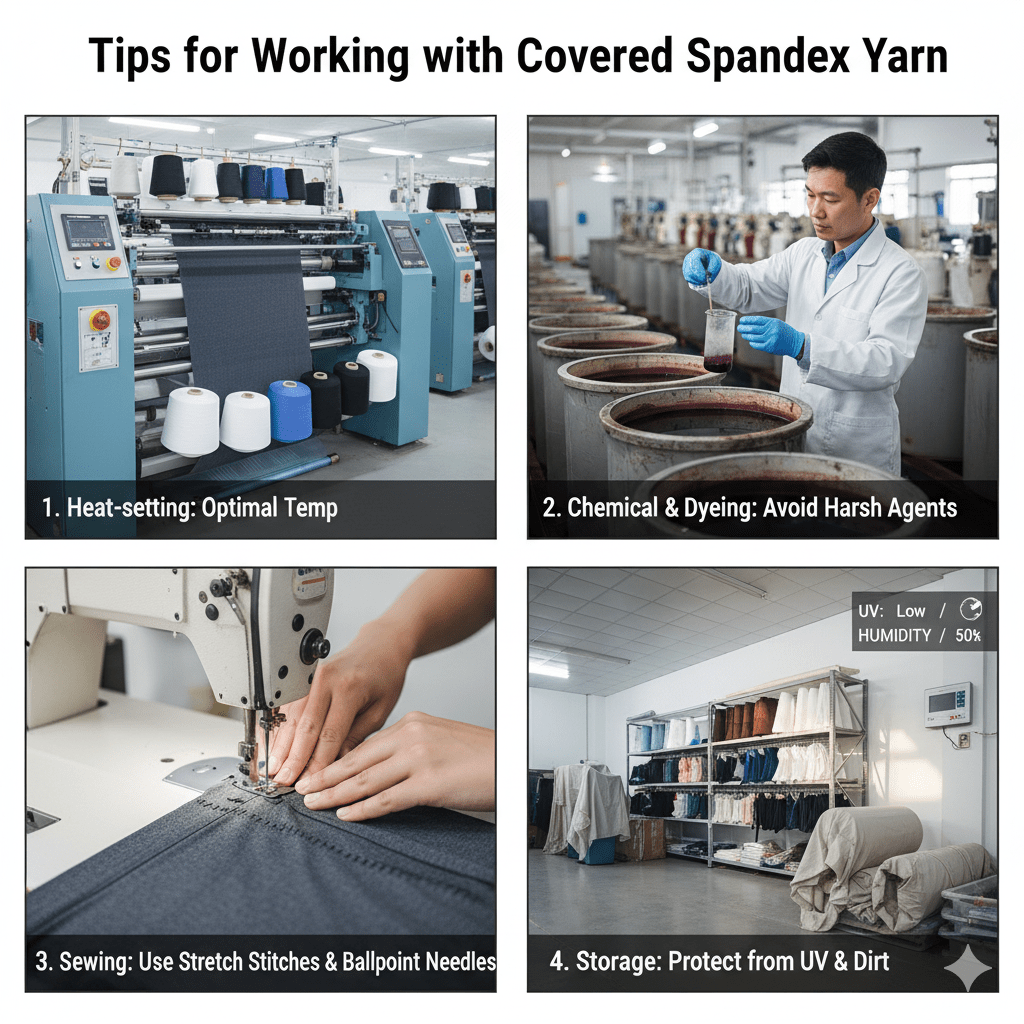
Introduction to Covered Spandex Yarn
In the evolution of textile materials, covered spandex yarn has emerged as a game-changer due to its unique properties. This type of yarn consists of a core of traditional spandex, encased in another fiber, which enhances its strength, wearability, and versatility in different fabric constructions. As consumers increasingly demand comfort, stretch, and style, understanding how to effectively work with covered spandex yarn becomes essential for designers, manufacturers, and hobbyists alike.
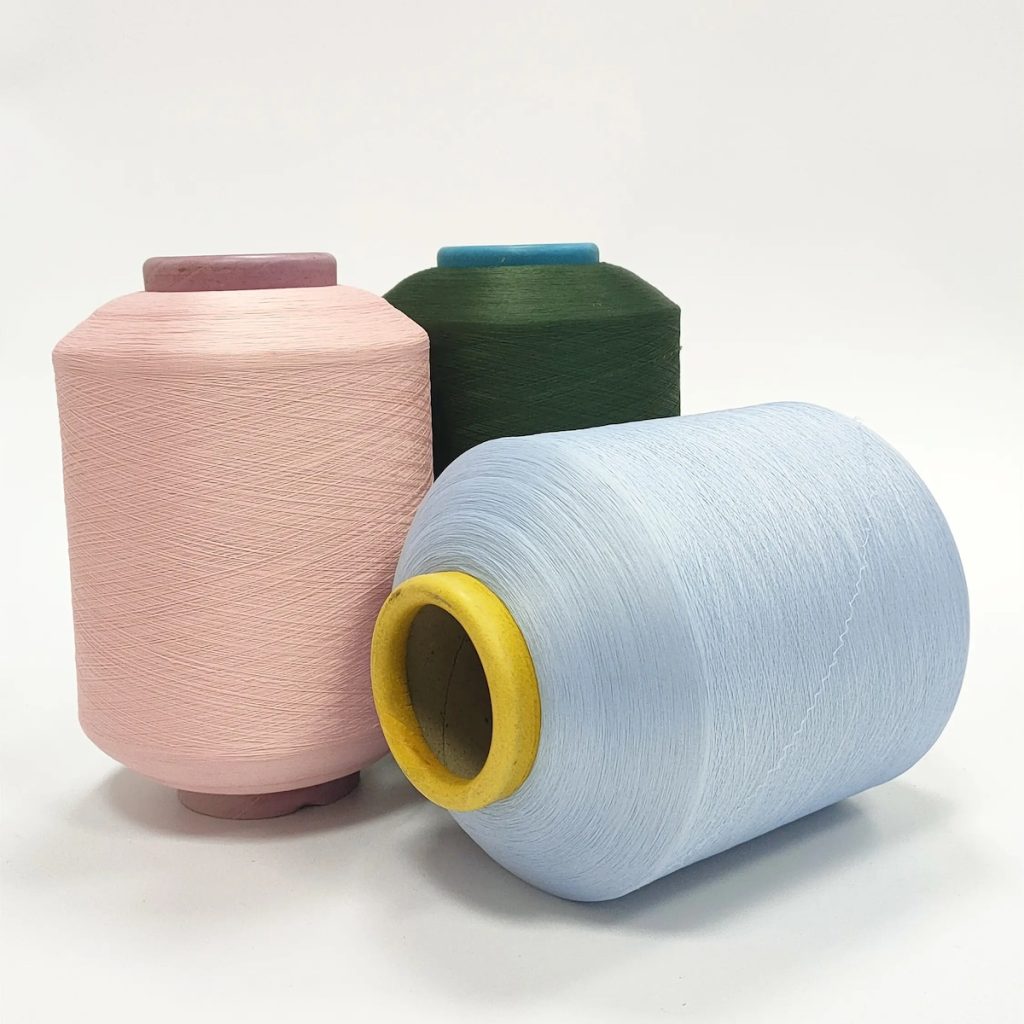
Definition of Covered Spandex Yarn
At its core, covered spandex yarn comprises an elastic spandex core wrapped in one or more layers of another fiber, such as nylon or polyester. This innovative structure allows the yarn to maintain its original shape while providing excellent stretchability, making it an ideal choice for garments requiring movement and flexibility.
When we think of covered spandex, we often envision form-fitting clothing, activewear, and swimwear. The outer layer not only protects the inner spandex from wear and tear but also contributes additional texture and aesthetic appeal to the fabric. This blend of functionality and style opens up numerous possibilities for textile applications.
Composition and Structure
The composition of covered spandex yarn is critical to understanding its behavior during manufacturing and end-use. The spandex core offers high elasticity, allowing the fabric to stretch significantly without losing its shape. This elasticity is crucial for garments that require snug fits, such as leggings, swimsuits, and compression garments.
The covering fiber can vary depending on the desired characteristics of the finished product. For example, nylon provides a smooth finish and durability, while cotton offers breathability and comfort. This customization enables manufacturers to tailor fabrics for specific market needs, enhancing the overall utility of covered spandex yarn in contemporary textile production.
Common Uses in Textiles
Covered spandex yarn is widely used across various segments of the textile industry. Its applications range from everyday apparel to specialized products. Some common uses include:
- Activewear: Fitness garments benefit greatly from the stretch and recovery properties of covered spandex yarn, allowing for unrestricted movement during workouts.
- Swimwear: The combination of water resistance and elasticity makes this yarn ideal for creating form-fitting swimwear that retains its shape.
- Underwear: Comfort is paramount in intimate apparel, and the smooth finish provided by the covering fiber coupled with the stretch of spandex ensures a snug yet comfortable fit.
- Specialty Fabrics: Beyond clothing, covered spandex yarn is also employed in upholstery, industrial textiles, and even medical applications, demonstrating its versatility.
Understanding Spandex Yarn
To fully appreciate covered spandex yarn, it’s essential to first understand what spandex yarn is and its position within the textile landscape.
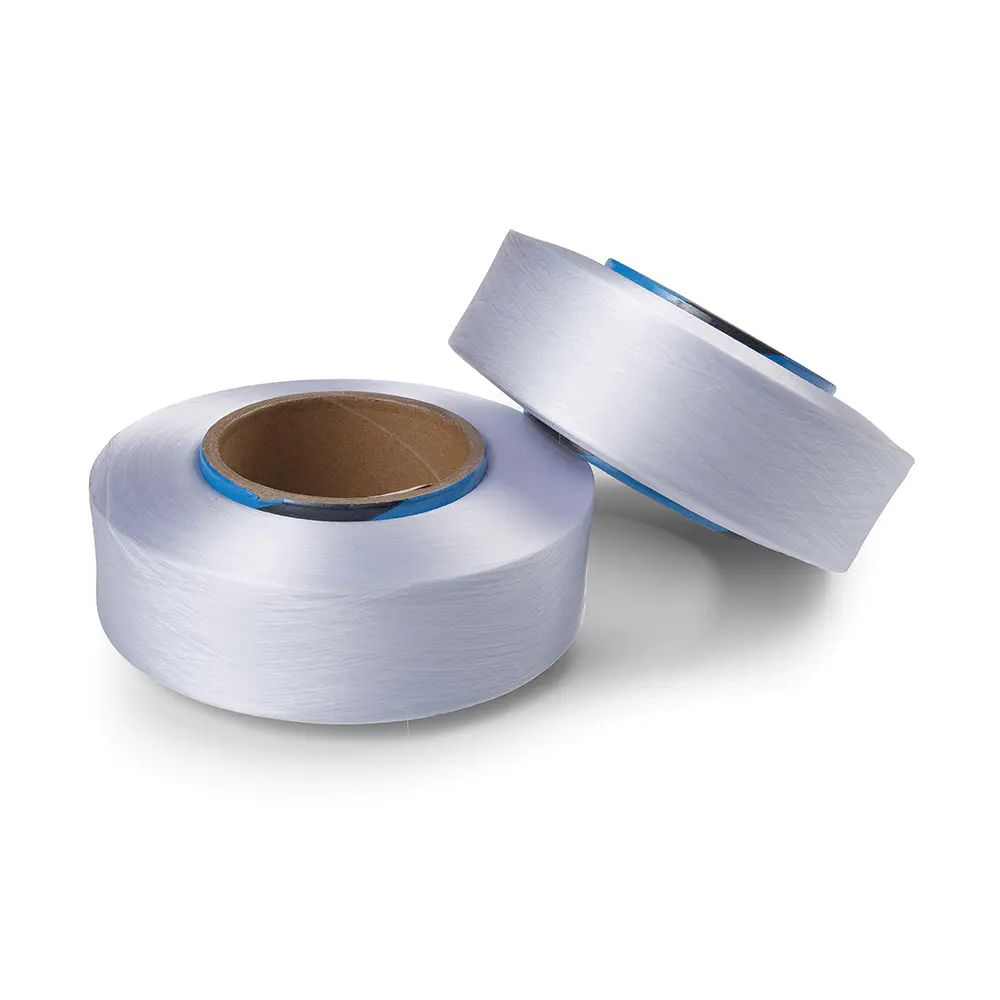
What is Spandex Yarn?
Spandex yarn, often known by its brand name Lycra, is a synthetic fiber renowned for its exceptional elasticity. It was invented in the late 1950s and has since revolutionized the way garments are designed and manufactured.
Unlike traditional natural fibers such as cotton or wool, spandex can stretch up to five times its length and then return to its original state. This remarkable ability has made spandex indispensable in modern clothing design, particularly in activewear and figure-enhancing garments.
Characteristics of Spandex Yarn
Spandex yarn possesses several characteristics that set it apart from other fibers:
- Stretchability: As mentioned, spandex can stretch extensively, offering unparalleled freedom of movement and comfort.
- Durability: Even after repeated stretching and washing, spandex maintains its integrity and does not lose elasticity over time.
- Lightweight: Spandex yarn adds minimal weight to fabrics, allowing for lightweight and breathable garments.
- Resistance to Abrasion: The synthetic nature of spandex means it resists wear and tear better than many natural fibers.
Benefits of Using Spandex Yarn
Using spandex yarn in textile production comes with a host of benefits. Here are a few key advantages worth noting:
- Enhanced Fit: Garments made with spandex conform to the body’s shape, providing a flattering silhouette and improved comfort.
- Greater Range of Motion: Spandex’s stretch properties allow for better mobility, making it ideal for sports and fitness apparel where performance is key.
- Fabric Versatility: Spandex can be blended with various fibers, enabling manufacturers to create fabrics that combine the best qualities of each fiber.
- Improved Durability: The addition of spandex increases a fabric’s lifespan, reducing the frequency of replacements and fostering sustainability in fashion.
The Spandex Covered Yarn HS Code
Navigating international trade laws can be challenging, especially when it comes to classifying textiles. Understanding the HS code for spandex covered yarn is vital for importers and exporters.
Importance of HS Codes in International Trade
Harmonized System codes are internationally standardized numerical methods of classifying traded products. They ensure consistent categorization, helping customs officials and businesses understand the tariffs, taxes, and regulations applicable to specific goods.
For the textile sector, finding the correct HS code is crucial for smooth operations during cross-border transactions. Misclassification can lead to delays, penalties, or increased costs, making it essential for companies dealing with covered spandex yarn to have accurate information.
Determining the HS Code for Spandex Covered Yarn
The HS code for spandex covered yarn typically falls within the broader category of synthetic fibers within the textile industry. While the exact code may differ based on local regulations and the specific composition of the yarn, most countries classify covered spandex yarn under a six-digit code that identifies it as a synthetic filament yarn.
Industry professionals often refer to national tariff databases or seek assistance from trade consultants to determine the precise HS code relevant to their products.
Implications of HS Code Classification
Correct classification of covered spandex yarn can impact various aspects of international trade. Companies must consider factors such as:
- Import/Export Duties: Different HS codes can attract varying levels of tariffs, affecting pricing strategies and profit margins.
- Trade Agreements: Certain regions may have favorable trade agreements impacting specific categories of goods, potentially influencing shipping decisions.
- Compliance: Proper classification ensures compliance with local and international regulations, reducing the risk of legal issues or fines.
Understanding the implications of HS code classification empowers textile businesses to navigate the complex world of international trade more effectively, ultimately benefiting their bottom line.
Comparing Polyester and Spandex
While both polyester and spandex are popular choices in the textile industry, they serve distinct purposes and offer different attributes. Understanding these differences can guide your material selection process when working with covered spandex yarn.
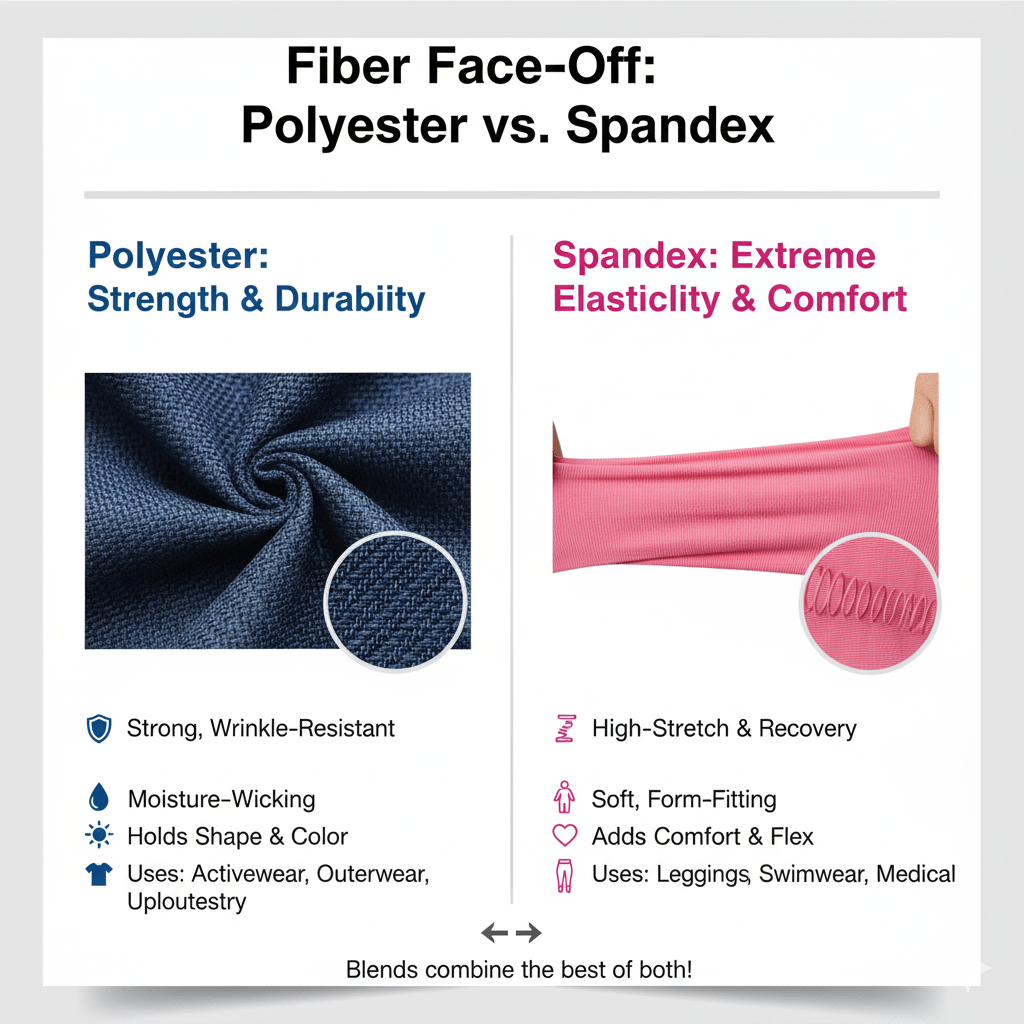
Overview of Polyester Fiber
Polyester is a synthetic fiber derived from petroleum products. Known for its durability, resilience, and resistance to wrinkles, polyester has become a staple in the textile industry.
One of the significant advantages of polyester is its moisture-wicking properties, making it suitable for sportswear and outdoor apparel. Additionally, polyester is relatively affordable and easy to care for, which contributes to its widespread use.
Key Differences Between Polyester and Spandex
When comparing polyester and spandex, several key differences emerge:
- Elasticity: Spandex is specifically designed for stretch, while polyester lacks this inherent elasticity. Combining the two results in a fabric that boasts the strengths of both.
- Purpose: Polyester is often used for its strength and durability in applications like outdoor gear and home textiles. In contrast, spandex excels in garment areas where stretch and shape retention are crucial.
- Aesthetic Qualities: Polyester can take on various finishes and textures, while spandex primarily focuses on functional properties.
By understanding these distinctions, textile producers can make informed decisions regarding which materials to incorporate into their products based on their intended application.
When to Use Polyester vs. Spandex
Deciding whether to use polyester or spandex depends on the specific requirements of the project at hand. For instance, if you’re designing activewear that requires maximum flexibility and a close fit, opting for covered spandex yarn is the best choice.
On the other hand, if durability and resilience are the main priorities, such as in outdoor apparel, incorporating polyester will yield better results. Often, a blend of both fibers can maximize the benefits of each, resulting in a fabric that meets a wide range of needs.
Conclusion
Working with covered spandex yarn presents exciting opportunities for creativity and innovation in the textile industry. By understanding its composition, applications, and relationship with other fibers like polyester, designers and manufacturers can unlock the full potential of this versatile material. As consumer demands for comfortable, stylish, and performance-driven products continue to grow, mastering the intricacies of working with covered spandex yarn will undoubtedly pave the way for success in the competitive world of textiles.


